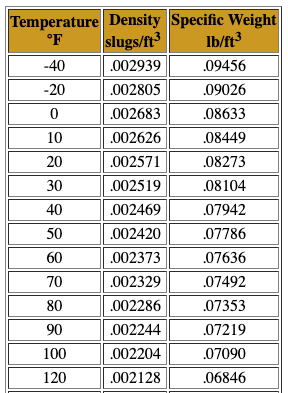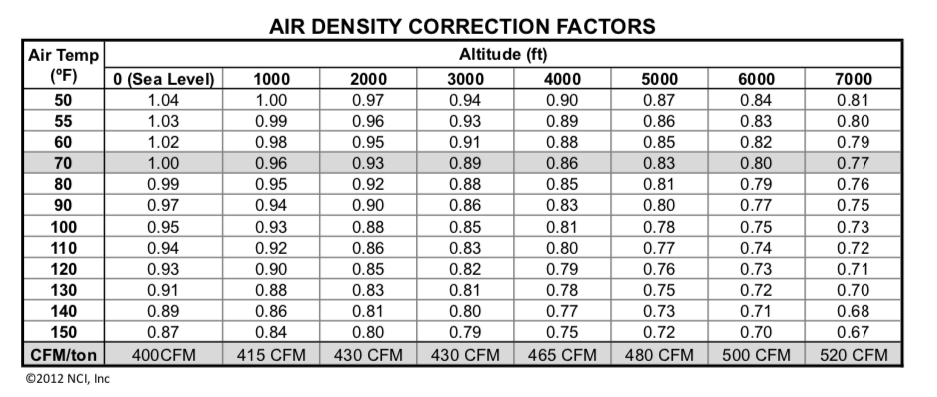At Eldridge, we use ASHRAE Standard Air Conditions to rate the performance of our Eldridge Fans. Standard Air has a density of .075 pounds per cubic foot at the conditions of 70º Fahrenheit, sea level barometric pressure of 29.92 inches of mercury, and 0% relative humidity. But what if my customer’s location is not at sea level or they will be running the fans during the summer months when it is hot and humid? What Affects Air Density? In the first of this two-part article, I’ll discuss how changes to temperature, altitude and humidity from Standard Air conditions affect air density.
Humidity
I was amazed as a kid to learn that air gets lighter when humidity increases. Aren’t wet things always heavier? I remember learning this fact when the TV Weatherperson said that decreasing barometric pressure often happens in advance of rain. The scientific explanation is that when humidity increases, water vapor molecules that have an atomic mass of 18 displace nitrogen and oxygen gas molecules that have atomic masses of 28 and 32, respectively. Thanks to Bill Nye for explaining!
We know that when humidity increases, the air gets less dense. By how much though? If we keep the Standard Air conditions the same but we increase Relative Humidity from 0% to 100%, then the air density deceases to .074322 lbs/ft3 which is 1% less than the Standard Air density. At 70º F, humidity changes have very little impact on air density. The graph below, from engineeringtoolbox.com, shows that relative humidity doesn’t begin to have a significant impact on air density until the air temperature is above 40º C or 104º F.

Temperature
Increasing temperature causes most materials to expand. Air acts the same way. As the air temperature increases, the molecules in the air are excited by the additional energy and they move further apart. Pilots know that when the temperature increases, the air is less dense and that it requires a greater distance to generate the lift required to take off.
To determine the impact of higher temperature on air density, this time we will keep the Standard Air conditions the same except we will increase temperature from 70º F to 80º F. At the temperature of 80º F, the air density is .0735 lbs/ft3 which is 2% less than Standard Air density. The table below, from engineersedge.com, shows that increasing temperature doesn’t begin to make a significant change in the air density until it gets above 100º F.

Altitude
If you have ever gone hiking or skiing in the mountains you know that it is harder to breath. There are fewer oxygen molecules per volume of air in the mountains than at sea level. This is because there is less atmosphere pushing down on the air molecules and pressing them together.
At 5,000 ft above sea level, the barometric pressure is 24.89 in. Hg. Using Standard Air conditions with a change to barometric pressure of 24.89 in. Hg, the air density is .0624 lbs/ft3 which is 17% less than Standard Air density. The table below, shows the Air Density Ratio at different altitudes and temperatures.
In Review
From part one on What Affects Air Density, we have determined that of the three factors, humidity, temperature and altitude, in Standard Air conditions, air density is most affected by altitude. Join us for part two, where I will discuss what effects a change in air density has on fan performance.

